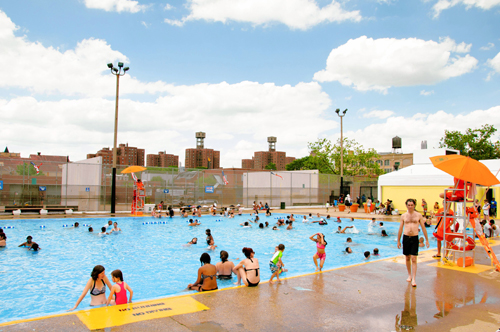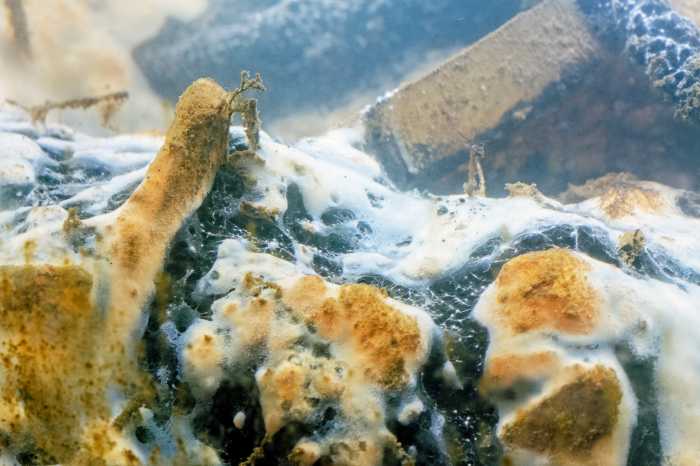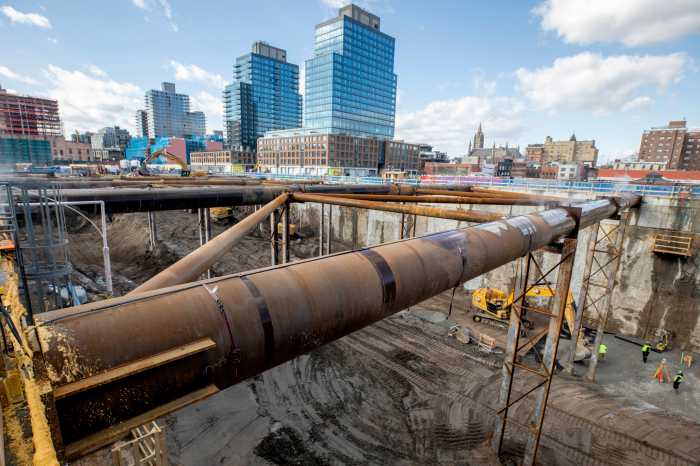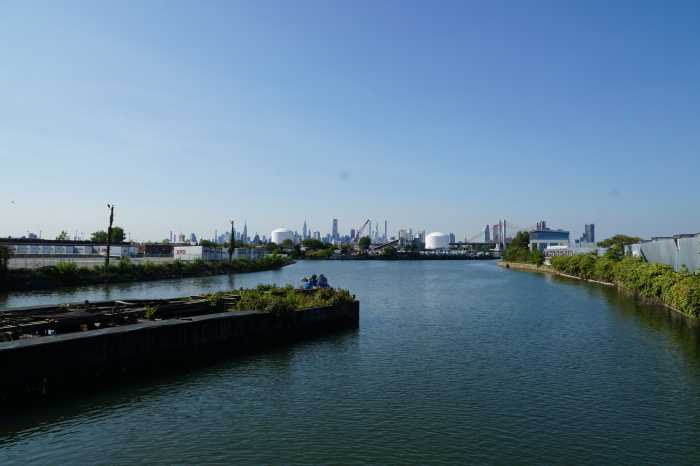The city wants to flush a federal plan to keep raw sewage out of the filthy Gowanus Canal by temporarily storing overflowing toilet water in mammoth new underground tanks, claiming the $78-million project is completely unnecessary because poop is not the fetid waterway’s biggest problem.
The city’s Department of Environmental Protection told The Brooklyn Paper that sewage overflow shouldn’t be the focus of the fed’s so-called “Superfund” cleanup of the canal and that the main issue is the industrial waste that has been sitting in the canal bed for decades, so it has no plans to follow the federal government’s order to build two storage tanks to keep raw sewage out of the polluted channel during heavy rain storms.
The agency claims that its own analysis of the canal bed found coal tar, a carcinogen dumped into the water by nearby gas plants last century, which it says should be the focus of the cleanup, and that the estimated 355 millions of gallons of wastewater that gets spilled into the “Lavender Lake” each year will not re-contaminate the water once the industrial waste is removed, making the expense unnecessary.
“The proposal to build large holding tanks is not supported by the sampling and analysis done by either DEP or EPA,” said Ted Timbers, a spokesman for the city’s Department of Environmental Protection.
Federal officials admit that the sewage isn’t the primary form of pollution in Brooklyn’s nautical purgatory and that the chief toxin in the sediment is, in fact, the coal tar that has seeped 150-feet-down into the canal-bed, but they say the raw sewage is a problem that needs to be faced.
“In terms of the total tonnage of pollution in the mud, there is no question that the majority comes from coal tar sources,” said Walter Mugdan of the federal Environmental Protection Agency, who added the raw sewage being dumped into the canal still needs to be addressed.
The feds say that the proposed holding tanks, one of which would likely be buried underneath the neighborhood’s beloved Thomas Greene Playground and adjoining Douglass-Degraw Pool, is the best way to keep raw sewage out of the canal, claiming it would reduce the amount spewing from rerouted drains by 58 to 74 percent.
There are approximately 10 drains along the 1.8-mile inlet that releases sewage the feds claim is laden with pollutants composed of gasoline, diesel fuel, and coal tar residues from people and businesses that dispose of items such as used oil into their drains and sinks and from street runoff during storms that carries road tars and oil drippings into the sewers. But only two of those pipes — one at the head at Butler Street and one at the middle of the canal — are responsible for the vast majority of sewage overflow into the canal. The feds’ plan will reroute those pipes so that during heavy rainfall sewage will flow into the holding tanks instead of the canal.
The tanks would then hold up to 8 million gallons of runoff until storms pass, then push the slop back through sewers to the Red Hook and Owl’s Head wastewater treatment plants.
But the city says there are other ways to solve the problem that don’t necessitate the construction of giant holding tanks beneath a local park, and that it is working on that alternative.
“DEP has already committed more than $150 million to on-going projects that we know will improve water quality in the Gowanus Canal and we are opposed to building storage tanks because they would result in the loss of an important community amenity, have a minimal effect on water quality, and amount to yet another unfunded federal mandate and higher water and sewer rates for New Yorkers,” said Timbers.
It claims it can reduce discharge by 45 percent by reopening the Gowanus wastewater pumping station and installing 600 curbside gardens designed to soak up rainwater.
The city also plans on the reactivating the on-again, off-again Gowanus Canal flushing tunnel later this year, which has been shut down since 2010 for repairs. The tunnel, originally constructed in the 1900s, was designed to pump fresh water from Buttermilk Channel into the head, but since the late 1990s has sent water in the opposite direction.
But the feds say that the city’s plan is not enough to do the job that the canal needs and the city, which it calls one of the major polluters of the canal, may not have a choice in the matter.
The Environmental Protection Agency claims under federal law, it can force the city build the holding tanks if that proposal makes it into the finalized cleanup plan that it will release this summer.
“We have the authority to limit or mitigate or address any ongoing pollution that goes into a Superfund site,” said Mugdan. “The only way we can see that is through these retention tanks.”
If the city refuses to comply without offering an alternative site for the tanks, the feds will take the city to court, where it could face fines and penalties.
“The city will either tell us this is a good location or here’s a better location — ultimately they cannot say there’s no location — [the tanks] have to be built,” said Superfund project manager Christos Tsiamis.
Reach reporter Natalie Musumeci at nmusumeci@cnglocal.com or by calling (718) 260-4505. Follow her at twitter.com/souleddout.

























